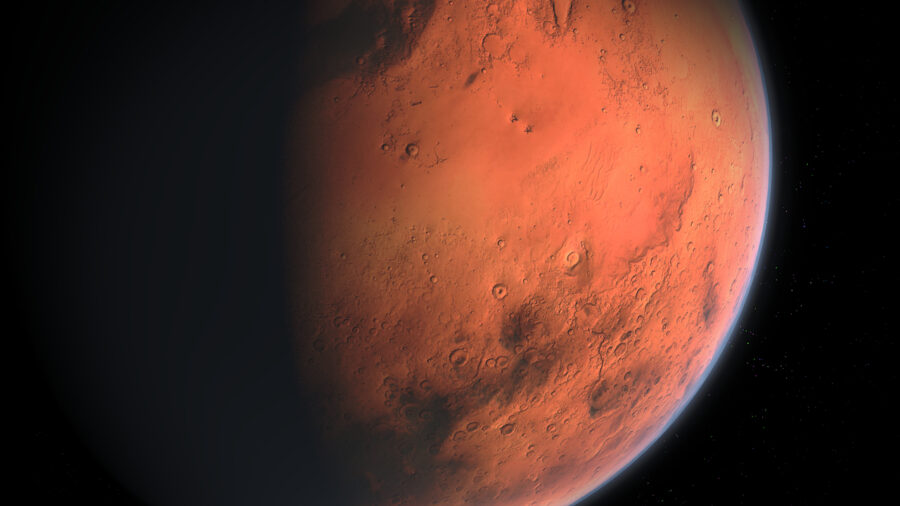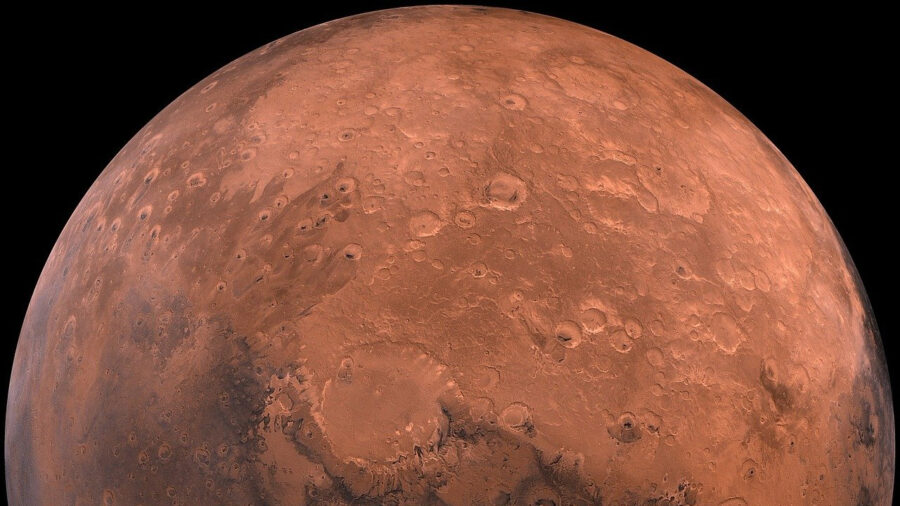Mars Hiding Radioactive Secret Under Planet’s Surface

The wonders of space are vast and sometimes unbelievable, with scientists constantly making discoveries about foreign planets that could never be replicated on Earth. According to a recent write-up in Futurism, one such marvel has been discovered right on Earth’s next-door neighbor, Mars. NASA scientists have ascertained through seismic data that the red planet contains a vast ocean composed of radioactive magma flowing just beneath the crust of the surface.
New earthquake activity on Mars gave scientists enough data to determine there’s flowing magma under the surface of the planet.
This magma ocean on Mars reaches depths of over 125 miles, according to research conducted by geophysicists in Zurich, Switzerland, making it completely unlike anything on Earth. Earth’s oceans are capable of reaching only a fraction of this depth, with the deepest point known to mankind, the Mariana Trench, only reaching 7 miles of depth. For comparison, 125 miles into the Earth would place you well beyond the continental tectonic plates and into the planet’s mantle.
The discovery of the nuclear lava oceans seemingly confirms the theory that Mars has a small and highly dense core not unlike our own, with layers of magma previously obfuscating the data taken on the planet through previous research.
Unlike the flowing magma found within Mars, however, Earth’s mantle is composed mostly of silicates, including garnet, pyroxene, and olivine, as well as magnesium oxide. One of the Zurich-based researchers, Amir Khan, explained in a recent statement to the press that the discovery has completely changed the way that scientists look at Mars, as the newfound information shatters our previous understanding of the planet’s density. Previous studies of Mars have led scientists to believe the planet’s core was unusually large, leaving a number of researchers puzzled as to the origins of the celestial body’s low density.

The discovery of the nuclear lava oceans seemingly confirms the theory that Mars has a small and highly dense core not unlike our own, with layers of magma previously obfuscating the data taken on the planet through previous research. These latest seismic readings have been taken by NASA‘s InSight robotic lander, which landed on the red planet’s surface in 2018. In addition to compiling evidence of hundreds of miles of magma beneath the surface, the InSight probe may have also shed some light on the existence of marsquakes, which have been known to shake the celestial’s surface similarly to our own earthquakes.
Only a few months ago, lunar research revealed the impact that small man-made rovers could have on the seismic activity of the moon, leaving researchers to reconsider future landing strategies for the satellite in Earth’s orbit.
Only a few months ago, lunar research revealed the impact that small man-made rovers could have on the seismic activity of the moon, leaving researchers to reconsider future landing strategies for the satellite in Earth’s orbit. Like Earth and the moon, Mars contains sensitive tectonic activity, which sometimes causes massive tremors. Unlike Earth, however, the crust of Mars is not teeming with continental plates shifting between various massive bodies of water, instead leaving most of the seismic tremors to come from a hail of asteroids.
Two asteroid impacts specifically triggered researchers’ interest, with enormous tremors being reported on the surface of Mars in August and September of 2021. Thanks to powerful vibration signatures picked up by InSight, NASA was able to discover a pair of meteors that struck the planet and burrowed incredibly deep into the rocky interior. These vibrations were also key pieces used to identify the chemical makeup of Mars’ core, which scientists now claim is made of pure liquid iron.
Though mankind has never set foot on the celestial body, Mars remains an essential study ground for researchers seeking to garner a better understanding of our Solar System. If we ever develop the technology necessary to land a human being on the big red orb, it may be best to avoid it. With meteor showers peppering the surface and magma oceans flowing just under the crust, it doesn’t exactly seem like a relaxing vacation destination.












